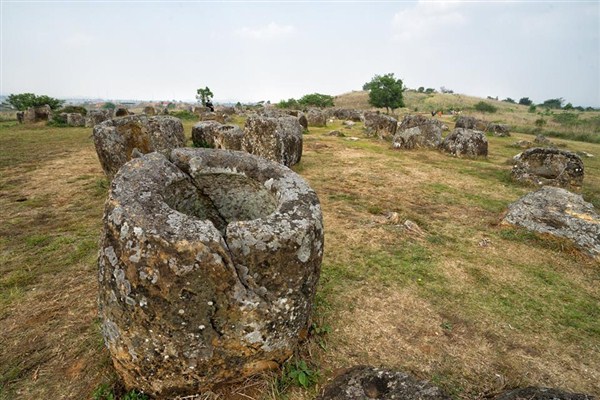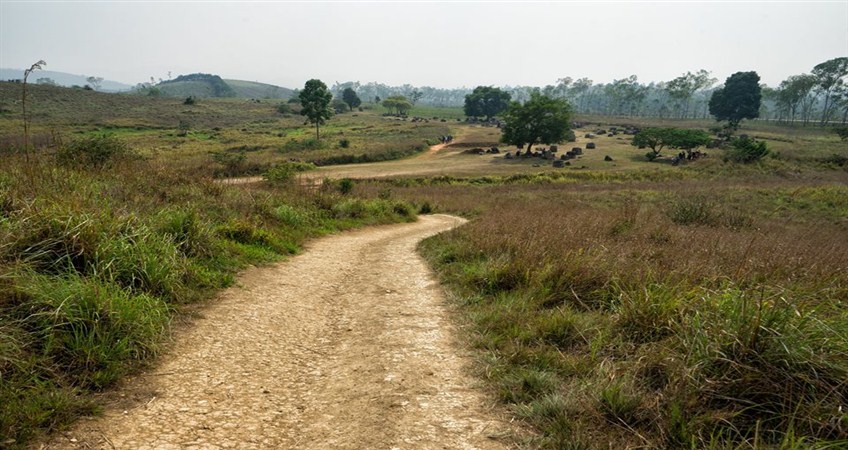
Since centuries Man has searched the answers to a lot of questions, which have troubled the minds of travelers from the time extensive explorations were made to lands far and beyond. Who drew the strange markings on the plains of Nazca? Who built the El Castillo in Mexico? Let me add another question to this list—who were the creators of the ancient stone jars placed across the plains of Laos?
On arrival to the plains
Laos is a country in South-east Asia surrounding the Mekong river and famous for its hilly landscape. The central plain of the Xiangkhoang Plateau near the town of Phonsavan has many stone jars scattered around, somewhat in clusters. The jars are made up of sandstone, granite, limestone, breccia, and conglomerate. Vientiane serves as the capital and the urban center of Laos. After the half-hour flight from Vientiane to Phonsavan, one can meet tourists heading to the historically important mysterious location. The environment around the stone jars is very eerie and somber, similar to the feeling that one would probably get around the Stonehenge of England.
Your agenda
The tourists visit the Site 1, the first stop on the plain and the base to see the only decorated jar out of all those had discovered so far. One must be careful enough to walk along only the safe-earmarked routes because many types of ammunition dropped in the country are declared unexploded and deadly.
The site has opened for explorers’ not long back. Other sites to be visited are 2, 3, 16, 23, 25 and 52. You need to look out for reminders of the past bombings which remain as the jars broken apart by the sheer force of the weapons. The shells, the burial markers, and the destroyed tanks also mark this place as the world's most bombed place per capita.
A tuk-tuk can be hired to move around in Phonsavan or Vientiane, but a tuk-tuk cannot take you to the Plain of Jars. You have to venture there alone or in the company of a professional guide. Hiring motorcycles are one of the options available for tourists.
The exciting packages offered to encompass LaosYou can opt for a half-day Vientiane city tour which includes stops to the Vat Sisaket, the Ho Phra Keo, the Pha That Luang, and finally to the Patuxai,the city's victory gate. A more detailed tour spread over few days will include a visit to the Kuang Si waterfall and the Pak-Ou cave replete with a stop at the elephant farm. The sites of Luang Prabang and Vang Vieng also attract tourists who would enjoy a more adventurous journey to see the traditional architecture and to explore the Lao community structure. The Khone Island in the Mekong River is another stop to be enjoyed for its serene nature.

How to reach the Plain of Jars?
The nearest airport is in Phonsavan. The tourists can choose either the VIP buses or the local buses to travel to Vientiane from Phonsavan. You can hire a minivan from either Luang Prabang of from Vientiane. The bus journey will take approximately 8 hours from Vang Vieng. One has to keep in mind that the roads consist of plenty of twists and turns; travelers who suffer from motion sickness should, therefore, equipped with the necessary medications and sick bags.
All you need to know about the visa
When you arrive to Laos from Vietnam, you could readily get visas at the counter of Nam Ka border, which works from 06:00 to 18:00. If one wishes to stay in Laos for more than a month, it would be a good idea to apply for a visitor’s visa at the consulate office in South-east Asia or the Laos embassy in your home country.
Money matters!
Kip is the official currency of Laos, but you can also deal with US dollars in small denominations across the country. Get set to be a witness to one of the mysteries of Laos, a country waiting to explore amidst the other wonders of the Asian geography.















